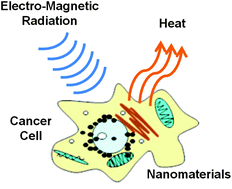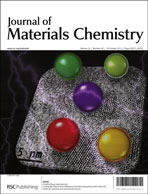Owing to the complexity of cancer biology, successful treatments must make use of multidisciplinary approaches that include genetic biology, materials science, chemistry, and physics. The development of nanotechnology as a mature science has provided new tools for the early detection and treatment of cancer by combining the synthesis of multifunctional nanosystems with the advanced capability of the targeted delivery of drugs and genes down to a single cell level. Nanomaterials with their unique optical, magnetic, and electrical properties have proven to be excellent candidates as thermal agents under the excitation of various electromagnetic fields (laser, alternating magnetic fields, or radiofrequency) that are capable of producing enough thermal energy for the specific destruction of the cancer cells both in vitro and in vivo. As a result, the use of such nanomaterials could open a new field in the area of cancer medicine given their ability to act as high resolution contrast agents and to thermally ablate tumors or individual cancer cells and to overcome some of the current limitations in cancer treatment.

You have access to this article
 Please wait while we load your content...
Something went wrong. Try again?
Please wait while we load your content...
Something went wrong. Try again?


 Please wait while we load your content...
Please wait while we load your content...